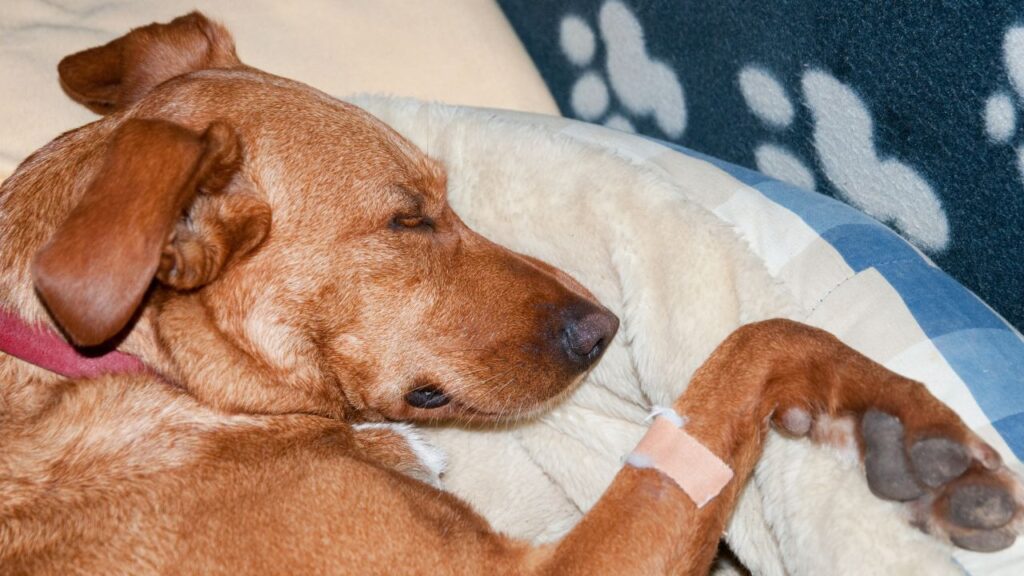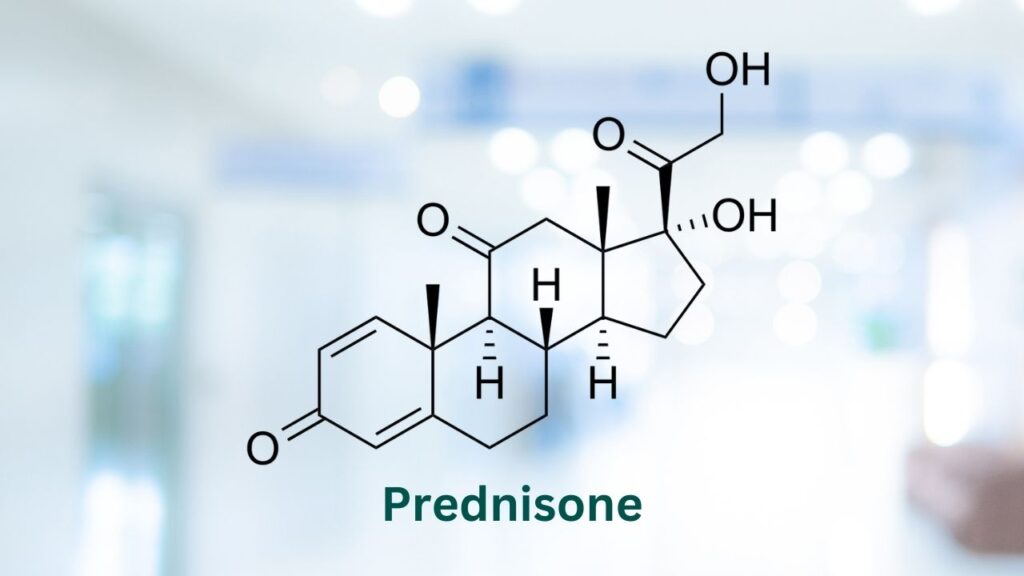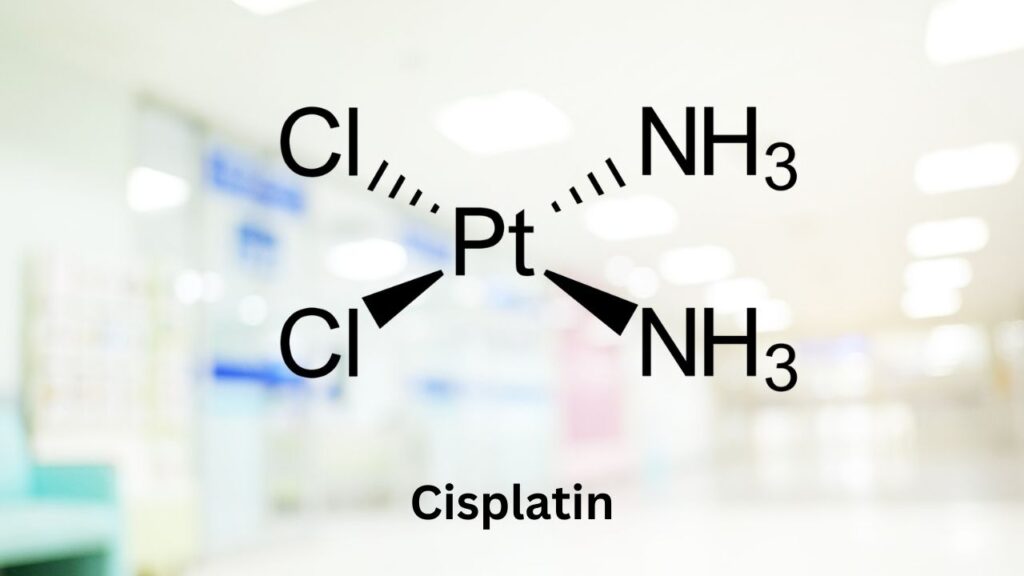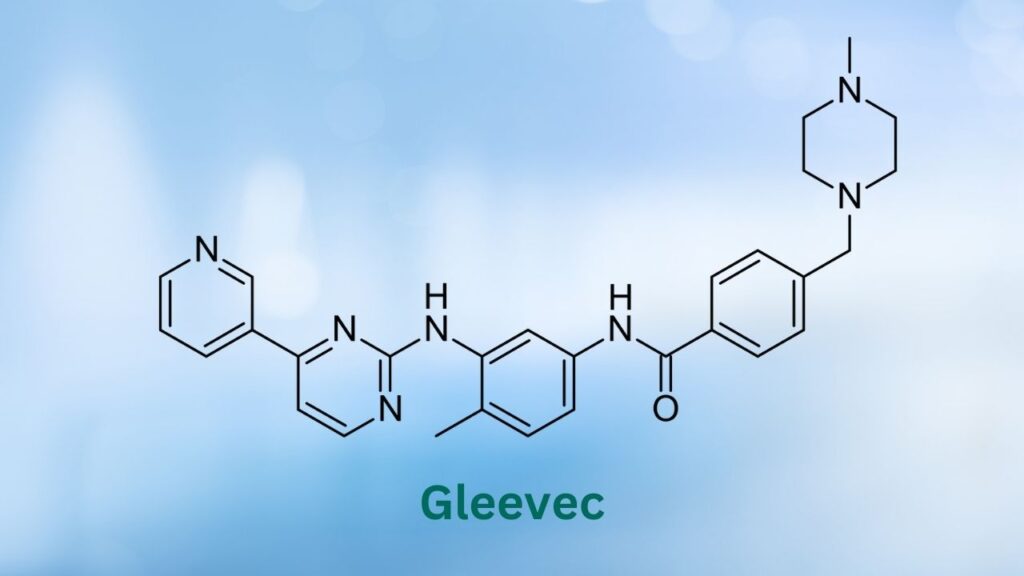Lomustine is a chemotherapy drug that is used to kill certain types of cancer cells by keeping them from growing and dividing.
Key Takeaways
- CCNU is the same as lomustine
- Lomustine begins working almost immediately, but it can take several weeks to see the full effects.
- The success rate of lomustine in dogs depends on the cancer that is being treated and other factors.
- How much lomustine is given to dogs is based on the dog’s body surface area. Don’t worry – your vet will calculate the dose for you.
- You can buy lomustine for dogs from your veterinarian or veterinary oncologist.
What Is Lomustine?
This chemotherapy drug is an alkylating agent of the nitrosurea class1-2, which means it sticks to the DNA of rapidly dividing cancer cells and stops those cells from making additional copies of themselves. This allows lomustine to accelerate the death of cancer cells.
Lomustine typically comes in capsule form but may be compounded or modified into other forms for veterinary patients in some cases.3-4 Thanks to the oral formulations, you can often give this drug to your dog from the comfort of home.
Brand Names
Gleostine®
Ceenu®
Lomustine may also be referred to as CCNU when discussed as the generic drug name.
Lomustine Protocol for Dogs
Lomustine is called an alkylating agent. Alkylating agents stick to the DNA (or genetic information) of cancer cells and interrupt their ability to divide and make copies.5 This is a very effective way of killing these rapidly dividing cells.
Chemotherapy is primarily a way of getting cancer-killing effects throughout the body. It does this through being absorbed and moving into the blood, which can penetrate tissue all over the body rather than at just one location. This is especially important for reducing, preventing, or treating metastasis (spread of cancer).
Lomustine Success Rate in Dogs
In dogs, lomustine is used to treat:
- lymphoma
- melanoma
- certain brain and spinal cord tumors
- mast cell tumors
- some lung cancers
- some kidney tumors
The most common uses are for lymphoma, nervous system tumors, and mast cell tumors.5
Lomustine has also been evaluated as a drug that may be appropriate and useful in metronomic chemotherapy. Lomustine has been shown to decrease tumor blood vessel growth and prevent tumor regrowth in some contexts.6 The metronomic form of treatment means giving low doses of chemotherapy drugs more often than traditional treatment. This causes less severe side effects and seems to be well tolerated for many dogs.
In some dogs with terminal cancer and/or metastatic disease, metronomic therapy with lomustine may be a valuable treatment strategy, especially in cases where no true standard protocol has been identified.
Also, due to the inhibitory impacts of lomustine on blood vessel growth combined with the safety of the metronomic method, there may be benefit to using metronomic lomustine for hemangiosarcoma patients.6
While metronomic use of lomustine is promising in some contexts, more research must be done to determine for which cancers and in which contexts this drug has the most benefit.
Lymphoma
Lomustine is used as a rescue agent for relapse or recurrence of lymphoma. This means it can be used for lymphoma patients that have successfully been treated but then relapse with the disease. It is less commonly used as a primary treatment except in cases where the first line of treatment is not a financially viable option.
Lomustine may also be incorporated into a multi-drug chemotherapy protocol such as LOPP or alternating with vinblastine.
Lomustine may also be used for drug-resistant lymphoma that does not respond to the typical treatment protocol. In these drug-resistant cases, lomustine can provide partial or complete remission in 25-50% of dogs.3 In a small study of nine dogs with either relapsed lymphoma or drug-resistant lymphoma, almost 30% of dogs had a median survival time of 150 days.7 More research needs to be done in this area due to small sample size and some notable side effects of the drug in this context.
It is used as the primary treatment drug for a specific type of lymphoma known as cutaneous lymphoma. This cancer affects certain immune cells in the skin (T-cells). For this type of lymphoma, 80-90% of dogs respond to the treatment. However, just over 25% of dogs that respond to this treatment go into true remission. That remission lasts for an average of three to four months.3
Born in a human drug research company, Tanovea (rabacfosadine) is now making history treating lymphoma in dogs. Oncologist Doug Thamm tells all in this episode of Dog Cancer Answers.
Brain and Spinal Cord Tumors
Lomustine has the ability to cross the blood-brain barrier, making it valuable for treating some cancers of the brain and spinal cord.11 Not many chemotherapy drugs can do this, so having lomustine as an option for these types of cancer is extremely valuable.
In one study of a brain tumor called a glioma, dogs who were treated with lomustine chemotherapy lived longer than those treated exclusively with symptomatic or supportive care.8
Mast Cell Tumors
Mast cell tumors are a very common canine cancer and the aggressive or high-grade forms carry a poor prognosis. One study notes a median survival time of four months for high-grade mast cell tumors13, and another study found that grade 3 (highest grade, poorest prognosis) mast cell tumors with certain specific cellular characteristics had survival times less than two months. A study using a combination therapy protocol of lomustine and steroid after surgical removal of the tumor led to an overall median survival time of about 2.5 years.9
More research needs to take place to address some inconsistencies in historic studies and true comparisons against no chemotherapy and other chemotherapy agents. However, the relatively low cost, oral formulations, and generally tolerable side effect profile make lomustine a drug of great interest as a treatment option for many different cancer types including mast cell tumors.9
When to Not Use Lomustine for Dogs
Lomustine should not be used in pregnant, nursing, or breeding animals. Live vaccines should be avoided while using this treatment.5 Extreme caution should be used in dogs with known underlying liver or kidney disease that is unrelated to their cancer.
Severe caution should be used for patients that already have a low red blood cell count, active infection, known compromised bone marrow activity, or respiratory/lung dysfunction.3-4
Here is a list of potential products that can interact with or have negative consequences when combined with lomustine:3
- Nalidixic acid
- Azathioprine
- Cyclophosphamide
- Amphotericin B
- Chloramphenicol
- Clozapine or Deferiprone
- Other drugs that may modulate or suppress the immune system or bone marrow activity
- Live vaccines
- Other alkylating agents
- Other medications that can negatively impact the kidneys
It is important to consult your veterinarian regarding all possible drug interactions before starting lomustine and to report all products that your pet is consuming, using, or considering before starting treatment with this drug (including supplements!).
Lomustine is not effective for all cancers. Despite its relatively low cost and ease of administration, it is not appropriate or effective for all cancer patients. For example, in a study using metronomic lomustine for osteosarcoma patients receiving radiation and no limb amputation, the metronomic use of the drug showed no evidence of prolonged survival.14
Dr. Sue Ettinger, veterinary medical oncologist, answers your most burning questions about chemotherapy in this episode of Dog Cancer Answers.
How to Give Lomustine to Dogs
Lomustine is usually given by mouth, but some protocols call for intravenous (IV) use. The oral form comes in a capsule and multiple dose sizes are available (5, 10, 40, and 100mg).3
The oral dose varies for each patient depending on size, which is represented as body surface area rather than weight. The dose ranges from 50-90mg/m2 and is typically given once every 3-8 weeks.3 Don’t worry – your veterinarian will calculate your dog’s dose for you!
The dose and interval will vary depending on:
- cancer type
- other treatments being used
- patient health
Blood work to check organ health and blood cell counts needs to be performed regularly while receiving this treatment to make sure that your dog is tolerating it well. If certain cell counts are low enough to cause concern for clotting issues, sometimes a dose of the medication will be delayed to give your dog a break and allow those cells to recover.10
Lomustine should be given with fluids but on an empty stomach.3 Some oncologists recommend giving at bedtime so that your dog will be asleep while the drug is absorbed.
What If I Miss a Dose?
If you miss a scheduled dose of this medication, consult your veterinarian about the best way to proceed. Do not double the dose. Often you will be advised to give the dose as soon as possible unless it is very close to the next dose period. However, this medication requires very careful and precise dosing, so please contact your veterinarian if a dose is missed.
Storage and Handling
Lomustine should be stored in its original container at room temperature between 68°F and 77°F (20°C and 25°C). Do not expose this medication to temperatures above 104°F (40°C).4
Protect it from light and heat, and keep it out of reach of children and pets.
GLOVES SHOULD BE WORN AT ALL TIMES WHEN HANDLING THIS MEDICATION. On the day of administration and for several days after, gloves should be worn while handling pet waste such as urine and feces. PREGNANT WOMEN SHOULD NOT HANDLE THIS MEDICATION OR THE WASTE FROM A PATIENT RECEIVING IT.5
Lomustine for Dogs Side Effects
While lomustine does have an extensive side effect list, it is generally considered well tolerated with close monitoring.
Because this drug targets cells that rapidly divide, the most common negative impact is bone marrow suppression. This means that the ability of the bone marrow to produce blood cells can be compromised with the use of this drug.
These cells include red blood cells, white blood cells, and platelets. All of these cells are important for the immune system, clotting of blood, and the delivery of oxygen throughout the body. A reduction in white blood cells can put patients at increased risk of infection. A reduction in red blood cells can lead to a pale skin appearance, weakness or tiredness, and fainting.
Your veterinarian will perform regular blood tests to determine if blood cell counts warrant the use of antibiotics to manage infection risk or if your pet would benefit from a delay before her next dose of lomustine.3,10
Other side effects of lomustine include:
- Vomiting
- Diarrhea
- Reduced appetite
- Sores in the mouth or throat
- Shortness of breath
- Coughing
- Wheezing
- Difficulty breathing
- Lethargy and fatigue
- Yellow or extremely pale skin
- Swelling of the face or other body parts
- Fainting
- Confusion
- Vision impairment
Dr. Nancy Reese weighs in on when vomiting is a concern and what you and your vet can do about it in this episode of Dog Cancer Answers.
If your dog is having difficulty breathing, has black tar-like stools, is vomiting dark color that looks like coffee grounds, is urinating blood, is having prolonged diarrhea, or has visible bleeding or bruising, immediate veterinary medical attention should be pursued.
Lomustine can negatively impact the liver and kidneys, so regular monitoring of blood work that checks these organs is critical.3-5 Up to 84% of dogs that receive lomustine will develop liver enzyme changes ranging from mild to severe.11 Lomustine can also cause lung scarring.
In an attempt to reduce risk or severity of certain side effects at home, your veterinarian may recommend an oral rinse, anti-nausea medication, washing your dog’s feet regularly, and/or feeding small and frequent meals that are low in fat. Your vet may also consider using a liver support supplement and antioxidant therapy in some cases due to known potential for liver enzyme changes.11
Good hydration is an important factor as well. It is also critical that your dog gets plenty of rest and does not engage in strenuous or risky activities while receiving lomustine.3-5
- Lomustine (CCNU). Lomustine | Cancer information | Cancer Research UK. https://www.cancerresearchuk.org/about-cancer/cancer-in-general/treatment/cancer- drugs/drugs/lomustine-ccnu. Published March 18, 2019. Accessed November 19, 2022.
- GLEOSTINETM (lomustine) capsules – food and drug administration. https://www.accessdata.fda.gov/drugsatfda_docs/label/2014/017588s040lbl.pdf. Accessed November 19, 2022.
- Lomustine. Pet Cancer Society. https://petcancersociety.com/types-of-drug/lomustine/. Accessed November 19, 2022.
- Lomustine: VCA Animal Hospital. Vca. https://vcahospitals.com/know-your-pet/lomustine. Accessed November 19, 2022.
- Lomustine – Mar vista animal medical center. https://www.marvistavet.com/lomustine.pml. Accessed November 19, 2022.
- Tripp CD, Fidel J, Anderson CL, et al. Tolerability of Metronomic administration of Lomustine in dogs with cancer. Journal of Veterinary Internal Medicine. 2011;25(2):278-284. doi:10.1111/j.1939-1676.2011.0684.x
- Pereira M, Maubecin E, Fidanza M, Mira G, Marquez A. Use of Lomustine as a rescue agent in canine lymphoma – WSAVA2005 – vin. Powered By VIN. https://www.vin.com/apputil/content/defaultadv1.aspx?id=3854324&pid=11196. Accessed November 19, 2022.
- Moirano SJ, Dewey CW, Wright KZ, Cohen PW. Survival times in dogs with presumptive intracranial gliomas treated with oral Lomustine: A comparative retrospective study (2008-2017). Veterinary and Comparative Oncology. 2018;16(4):459-466. doi:10.1111/vco.12401
- Hay, J. K., & Larson, V. S. Lomustine (CCNU) and prednisone chemotherapy for high-grade completely excised canine mast cell tumors. The Canadian Veterinary Journal. 2019; 60(12), 1326-1330.
- Brooks W. Lomustine. VIN. https://veterinarypartner.vin.com/default.aspx? pid=19239&id=4952055. Published 2004. Accessed November 19, 2022.
- Skorupski K. Pros and cons of supplements in treating pet cancer. Veterinary Practice News. https://www.veterinarypracticenews.com/pros-and-cons-of-supplements-in-treating- pet-cancer/. Published October 3, 2017. Accessed November 19, 2022.
- The American Cancer Society medical and editorial content team. How does chemo work?: Types of chemotherapy. American Cancer Society. https://www.cancer.org/treatment/treatments-and-side-effects/treatment- types/chemotherapy/how-chemotherapy-drugs- work.html#:~:text=Alkylating%20agents%20keep%20the%20cell,%2C%20multiple%20myeloma %2C%20and%20sarcoma. Published November 22, 2019. Accessed November 19, 2022.
- Animal Specialty & Emergency Center. Mast Cell Tumors. animal-specialty-emergency. https://vcahospitals.com/animal-specialty-emergency. Published October 14, 2022. Accessed November 19, 2022.
- Duffy ME, Anderson CL, Choy K, Fidel JL. Metronomic administration of lomustine following palliative radiation therapy for appendicular osteosarcoma in dogs. The Canadian veterinary journal = La revue veterinaire canadienne. https://www.ncbi.nlm.nih.gov/pmc/articles/PMC5764213/. Published February 2018. Accessed January 9, 2023.
Gleostine® is a registered trademark owned by NextSource Biotechnology, LLC
Ceenu® is a registered trademark owned by Bristol-Myers Squibb Company
Topics
Did You Find This Helpful? Share It with Your Pack!
Use the buttons to share what you learned on social media, download a PDF, print this out, or email it to your veterinarian.









